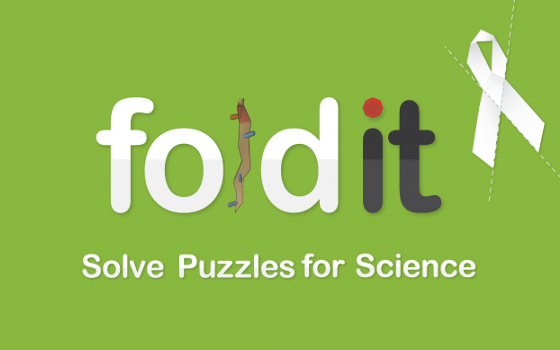"It shows that anybody with a 3-D mentality, including gamers, can do something that previously only scientists did, and in doing so they can help scientific progress," said study co-author James Bardwell, University of Michigan professor in molecular, cellular and developmental biology.
Groups taking part in the competition to interpret biochemical data in order to discover the protein's structure included: 469 video game players who played Foldit, two trained crystallographers, 61 U-M undergraduates who used a computer modeling program in class, and two separate computer algorithms.
Co-author Scott Horowitz, a postdoctoral fellow at U-M, said he plans to integrate Foldit into his class. He believes it will motivate students to learn about a very complicated subject because the game's competitive and fun.
"I've seen how much players learn about proteins from playing this game," Horowitz said. "We spend weeks and weeks trying to jam this into students' brains and Foldit players learn it naturally because it's fun."
The students and professionals worked independently, reflecting the norm for scientists engaged in model building, while the winning video game players took a more collaborative approach. The gamers' superior outcome suggests that collaboration is a big help in achieving the best results.
"We think this is a big deal because interpreting an electron-density map can be a labor-intensive, error-prone process - and we show that crowd-sourced Foldit players can do it as well as, or better than, professionally trained crystallographers," said graduate student Brian Koepnick of the University of Washington Institute for Protein Design, who helped design the contest and analyze the results.
The study's authors say the next step in the research is to incorporate the gamers' tips and tricks into the software that scientists use when building these structures.
Every function of the body involves proteins and understanding how they work is an important scientific question. To that end, the study also found that analysis of the protein targeted by the competition uncovered a new family of proteins that appears to be involved in preventing plaque formation, which is implicated in diseases like Alzheimer's.
This isn't the first time U-M students have tackled the challenge of building protein structures. The competition was designed in part to see if U-M undergrads could build on a previous class assignment in which students played the game to improve upon an already published protein structure.
The study was led by U-M researchers in collaboration with the University of Washington, University of Massachusetts-Dartmouth and Northeastern University.
Horowitz S, Koepnick B, Martin R, Tymieniecki A, Winburn AA, Cooper S, Flatten J, Rogawski DS, Koropatkin NM, Hailu TT, Jain N, Koldewey P, Ahlstrom LS, Chapman MR, Sikkema AP, Skiba MA, Maloney FP, Beinlich FR; Foldit Players; University of Michigan students, Popović Z, Baker D, Khatib F, Bardwell JC.
Determining crystal structures through crowdsourcing and coursework.
Nat Commun. 2016 Sep 16;7:12549. doi: 10.1038/ncomms12549.
